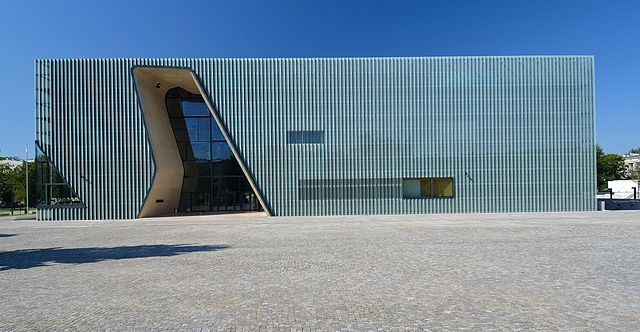Visual History Archive Launches in Museum of the History of the Polish Jews' Education Department

The new Museum of the History of the Polish Jews in Warsaw is now offering educational programming for students that uses the USC Shoah Foundation’s Visual History Archive.
The state-of-the-art Museum of the History of Polish Jews (MHPJ) opened in Warsaw in April 2013. It is a cultural and educational center, with lectures, performances, and workshops in addition to exhibitions about the 1,000-year history of Jews in Poland. The core exhibition will open in September 2014.
The Visual History Archive contains 52,000 testimonies of survivors and other witnesses of the Holocaust and other genocides. The testimonies were conducted in 57 countries in 33 languages. Forty-eight universities and museums around the world have full access to the Visual History Archive, and 195 sites have partial access.
The museum developed 39 lessons for students. Teachers may sign up to bring their classes to the museum to complete one of the lessons in one of three time slots throughout the day, four days a week.
The lessons are divided into five subject areas: Jewish Ways of Sanctifying Time; Jewish Religion, Traditions and Learning; Jewish Places – The Jewish World; Polin – The Thousand Year History of the Polish Jews; and Civic Education and Countering Discrimination. All the lessons can be catered to elementary, middle or high school students. Lessons cover topics about history, Jewish traditions, Yiddish language, anti-Semitism, and more.
Three lessons use testimony from the Visual History Archive: “Warsaw Ghetto Uprising in the Eyes of Fighters and Witnesses,” “Holocaust in the Eyes of Children” and “Only Life Counts: A Story about Alina Margolis-Edelman.”
In February 2014 MHPJ will host a USC Shoah Foundation Teaching with Testimony in the 21st Century workshop for local educators. Participating teachers will receive training in using the Visual History Archive in their own classroom environments, and they’ll each develop their own lesson plans that use testimony from the Visual History Archive.
Like this article? Get our e-newsletter.
Be the first to learn about new articles and personal stories like the one you've just read.